Each year, we analyze registration and finisher data from RunSignup endurance events and GiveSignup fundraising events to identify industry trends and provide recommendations. In all, the resulting RaceTrends Report accounts for 45-50% of the US endurance market, including more than 85,000 race events and 10.8 million participants.
Today, we’re narrowing in on the GiveTrends portion of the report to understand the trends within events that have enabled donations and/or peer-to-peer fundraising.
Donations: How Much People Give
First, we evaluate the number and amounts of donations coming in, and how those donations accumulate. From this, it’s clear that donors are most likely to give small dollar donations (under $25). However, large donations are possible, and providing a wide range of donation amounts in your registration path ensures there’s an easy option for donors of all types.
Number of Donations by Dollar Amount
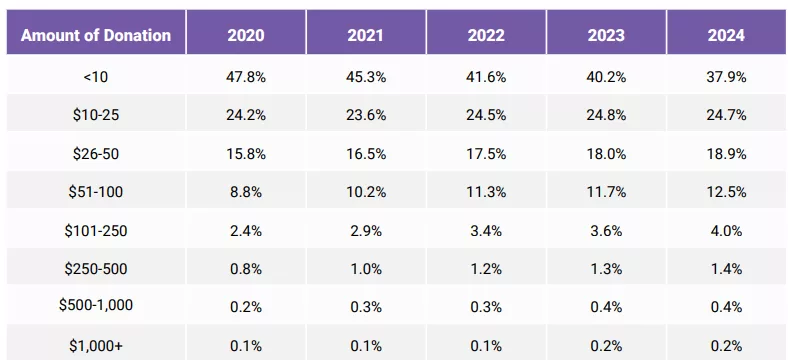
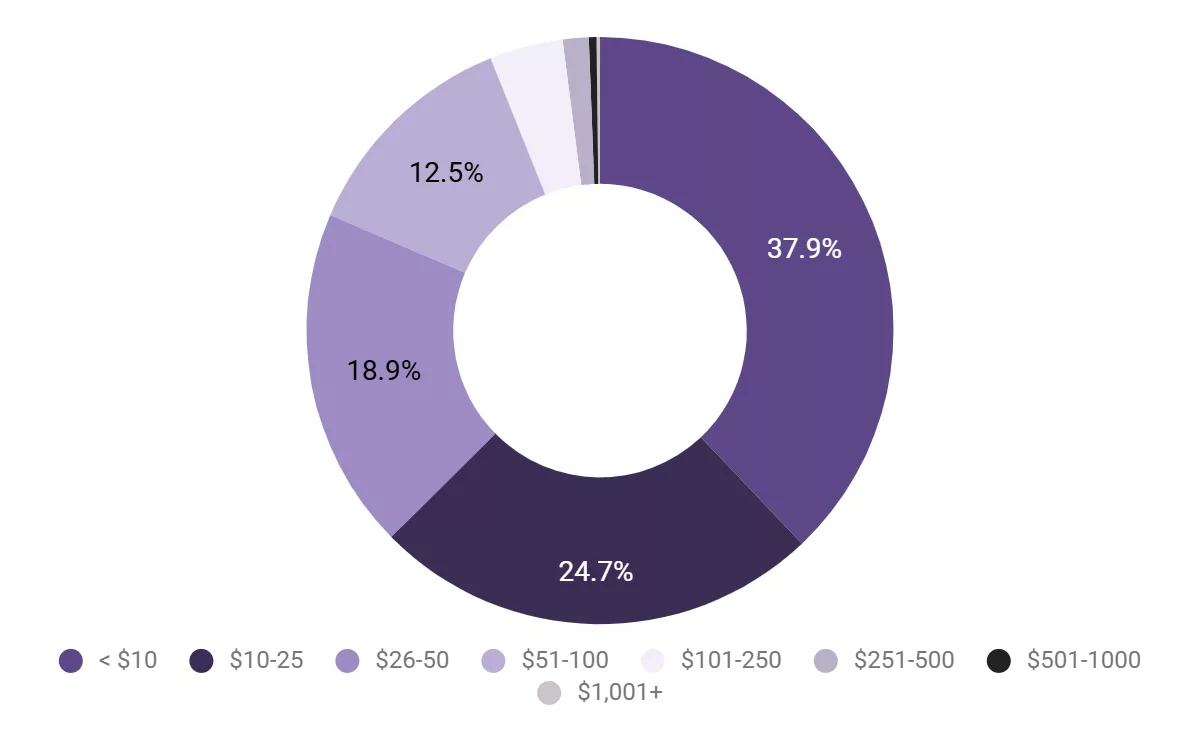
Total Value of Donations by Dollar Amount
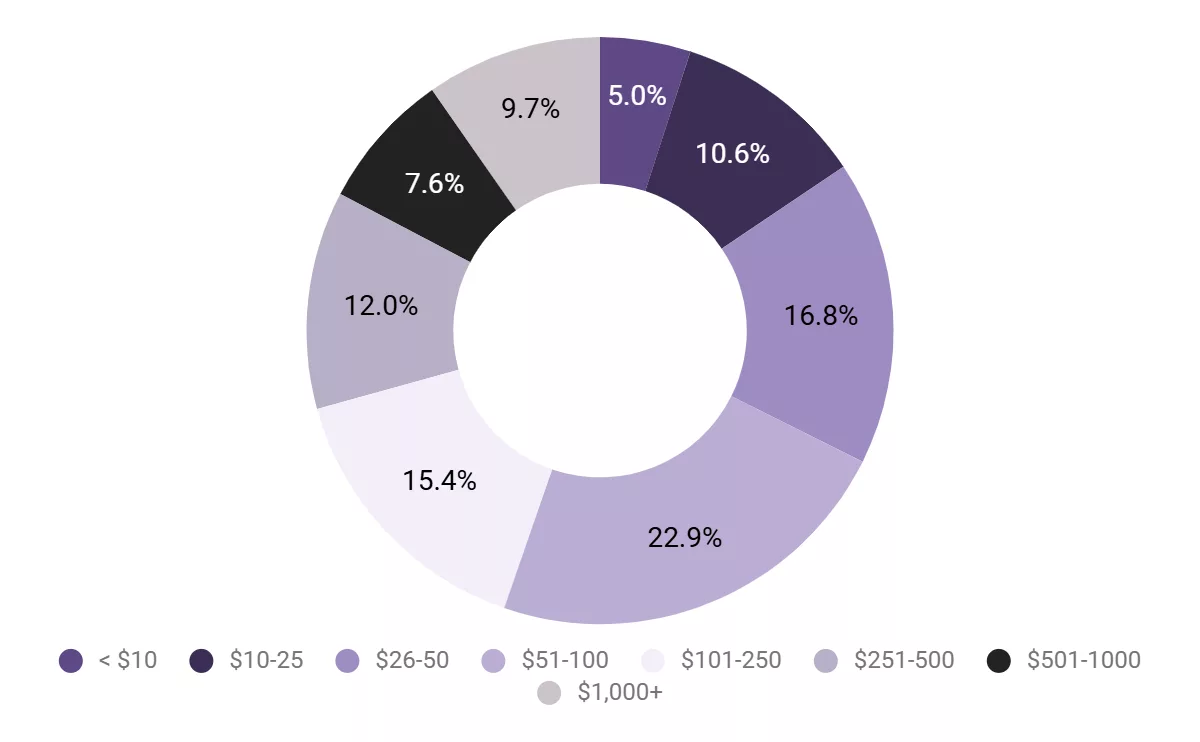
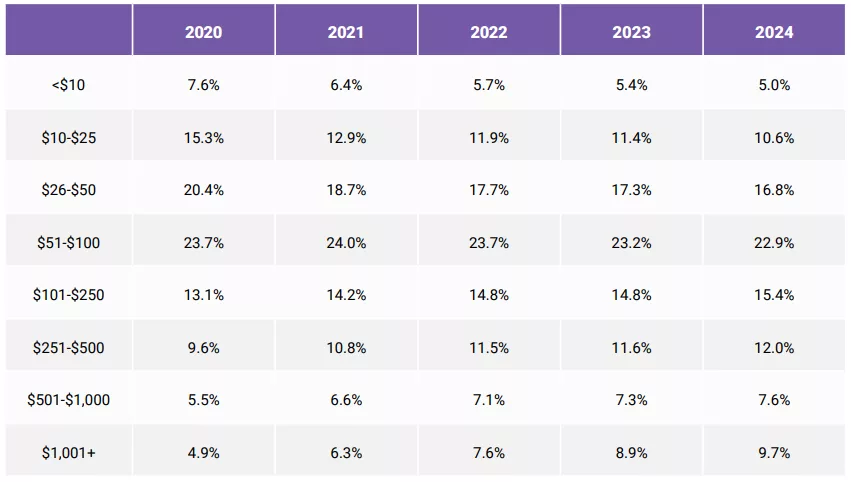
High dollar donations bring in real money for your cause. In 2024 17.23% of donation dollars came from donations of more than $500 despite making up just 0.6% of total donations made. On the other hand, your supporters are most likely to donate small amounts, 37.9% of donations coming in for less than $10.
% of Donations Made Compared to % of Total Donation Dollars

Takeaways:
- Meet donors where they are. A single $10 donation may not go very far, but the cumulative impact of thousands of $10 donations is significant. Make sure your low-dollar donors still feel like they’re making a difference by including a low-dollar donation option and an automatic thank-you email.
- Ask for more. While the majority of your donors give small amounts, high dollar donations do go far. In 2024, less than 2% of donors contributed more than a quarter of all donation dollars through donations of $250 or more.
- Make donations tangible by setting donation levels based on real-world examples of the impact to your organization. A donor may give an extra $20 when they can visualize the actual difference a little more money can make
Examples of donation levels:

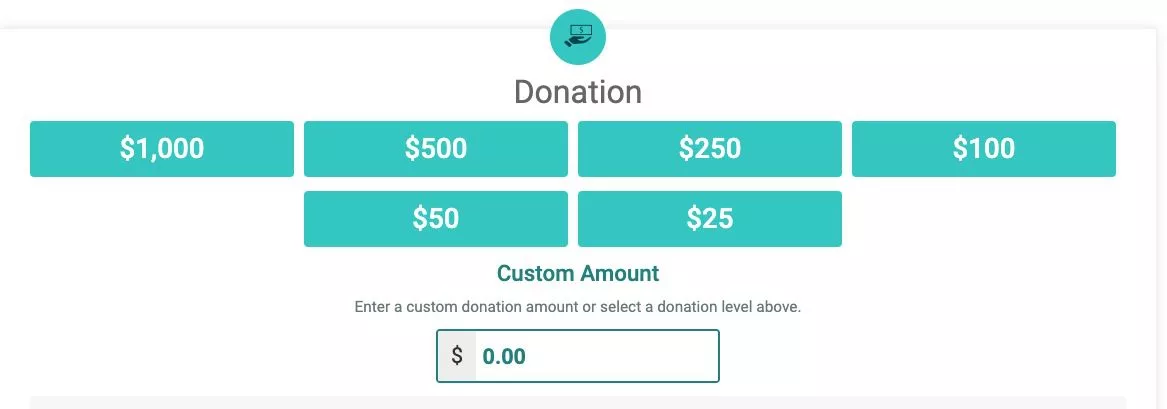
Donations & Fundraising: How to Increase Donations
There are three basic ways a race can raise more on RunSignup:
- Simple Donation option during and outside of registration
- Easy checkbox on the checkout page (with a pre-set donation amount)
- Peer-to-Peer Fundraising (where participants raise money from their own community)
The majority of races on RunSignup with donations simply include a donation step in registration. However, one of the most overlooked ways to increase the number and value of your donations is to add a donation checkbox to the checkout page (now even easier).
Number of Donations by Fundraising Type
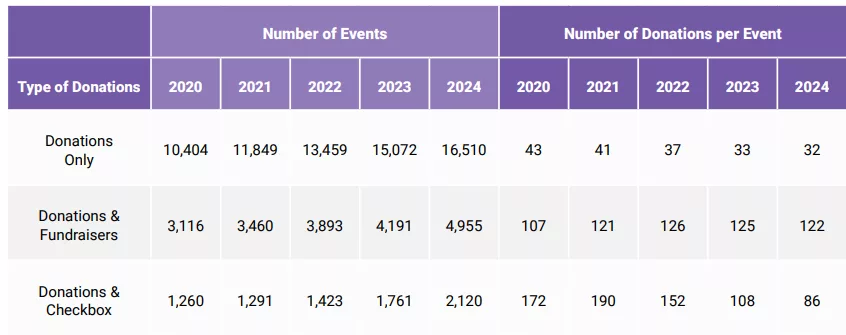
Money Raised by Fundraising Type
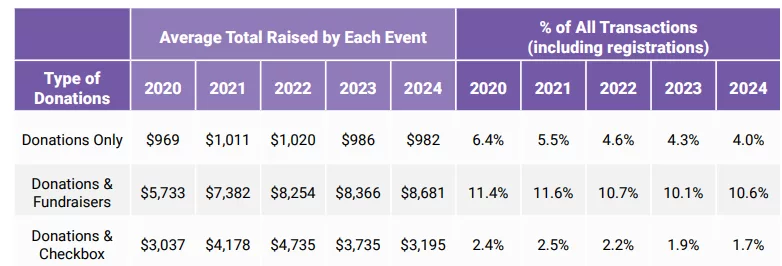
While a checkbox can boost donations, it’s clear that maximizing fundraising power comes from enabling peer-to-peer fundraising. On average, races with peer-to-peer fundraising collected 2.7 times as many donations and raised more than nine times as much as races that only enabled donations. The personal connection of fundraisers, along with motivating gamification features, makes fundraising a clear winner for nonprofits with engaged supporters.
However, peer-to-peer fundraising isn’t really a set-it-and-forget-it operation. Fundraisers need guidance, support, and appreciation to succeed, and races enabling P2P should ensure they have the bandwidth to engage with fundraisers on a regular basis.
Takeaways
- If maximizing fundraising dollars is your primary goal, peer-to-peer fundraising is your best option. However, peer-to-peer fundraising is only successful if you invest time in it. If you’re interested in engaging fundraisers, make sure you have the resources to cultivate fundraisers, supply resources to help them meet their goals, and reward them for their effort.
- Fundraising should be fun! Activate gamification features like milestones and badges and customize the fundraising experience. To keep the competitive fires lit, add leaderboards to your race website.
- If you want to boost donations but don’t have the ability to truly support fundraisers, enabling the checkbox donation option is simple for you and your donors. The action is easy, but the results are big – races with the checkbox switched on collect from more donors and raise more than more than times as much.
Checkbox Donation Option at Checkout
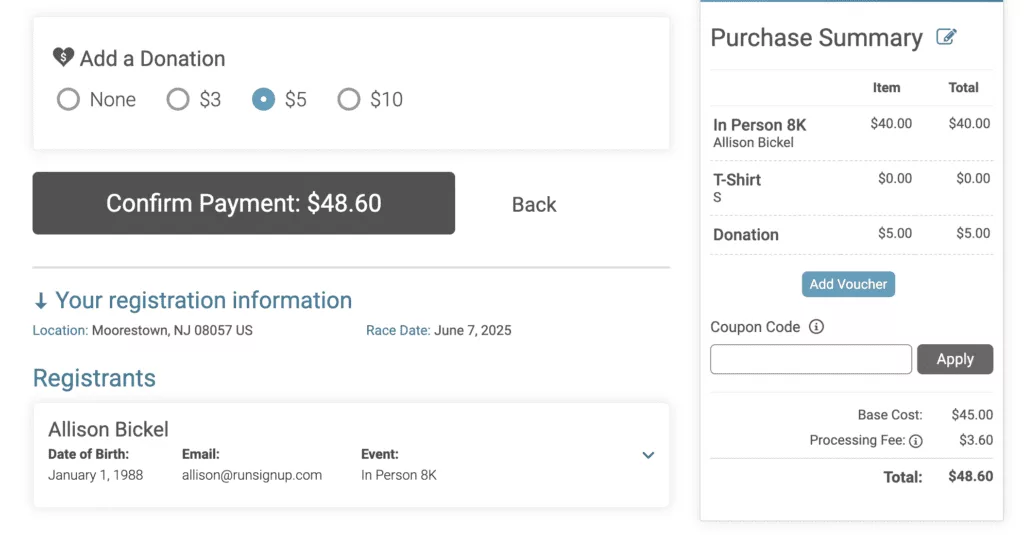
Detailed Explanation to Make it Easy to Become a Fundraiser (or Join a Fundraising Team)
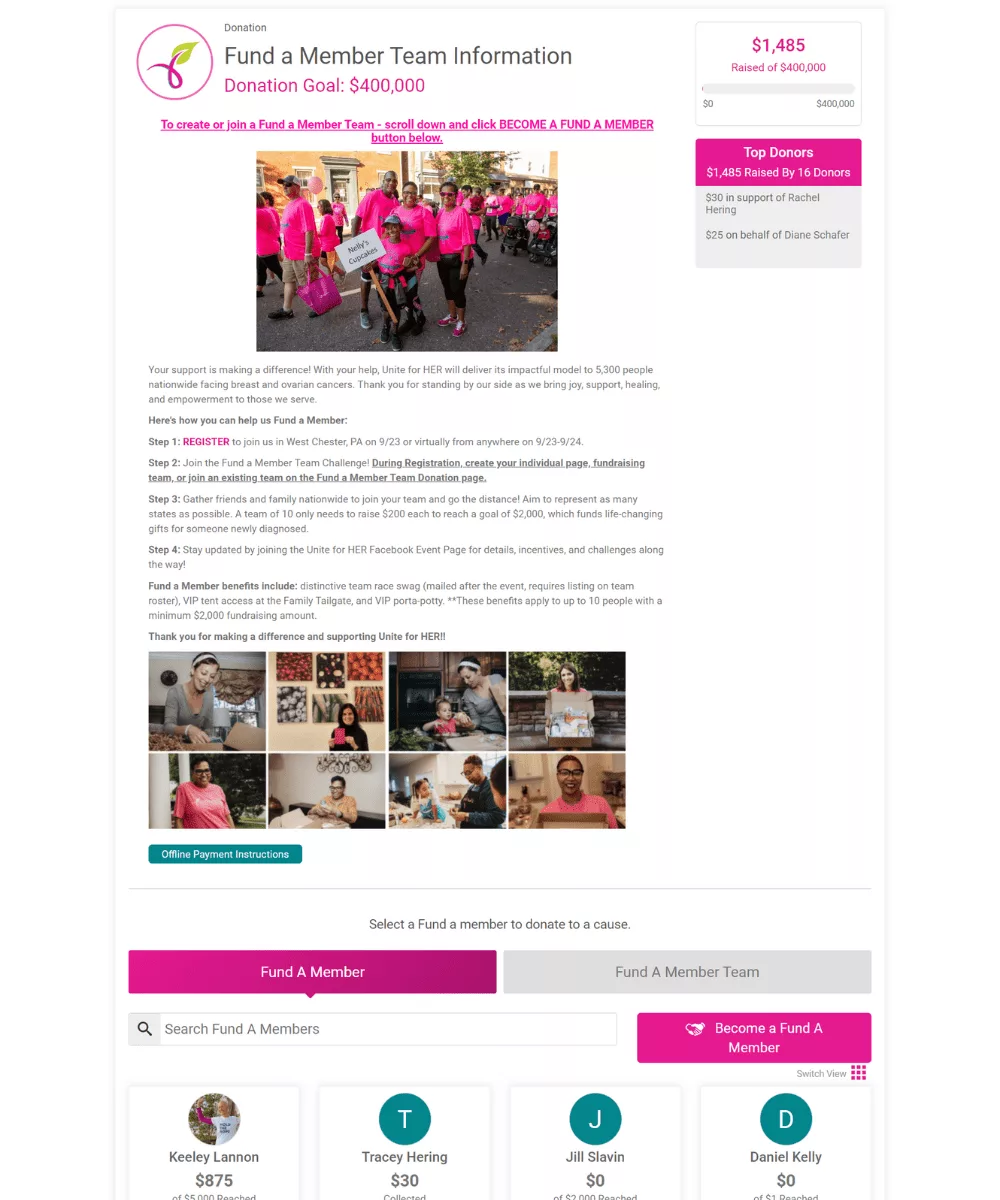
The Variability of Fundraising Events and Picking the Right Settings for Your Event
One of the most common questions we get from new peer-to-peer fundraising events sounds simple: How much does the average fundraiser raise? The simple answer is that individual fundraisers raise an average of $188.58, while the average team fundraiser raises $5,278.95. Reality, however, is much more complex.
Peer-to-peer fundraising events have a significant amount of variability. Some offer significant incentives for fundraising (or event require a fundraising minimum), while others simple allow people to fundraise if they feel particularly motivated. Some events require everyone to become a fundraiser, or require every fundraiser to join a team. The number of potential factors impacting fundraising totals is great, making data around averages fairly useless. However, events can glean something from looking at events like their own.
For this data, we reviewed the top 50 peer-to-peer fundraising events in 2024 to better understand the range of possibilities. What we see does give us some insight: races that require or highly encourage fundraising end up with a lot of fundraisers, but many of those fundraisers raise little to no money. On the flip side, the highest productivity fundraisers are often seen in events with just a few dedicated fundraisers. Similarly, smaller fundraising teams often did better than large teams, likely because the team members were more personally invested in the fundraising portion.
Performance of Fundraisers Across a Range of Events

Performance of Fundraising Teams Across a Range of Events

None of this means that the optimal approach is always to have just a few fundraisers. Fundraising events with many fundraisers can be very successful by cultivating the more dedicated supporters and collecting a long-tail of small donations from the hundreds or thousands of less-engaged fundraisers. Knowing your supporter-base and the size of your audience is crucial to determining the best approach to fundraising for your event.
Takeaways
- There’s no “right” approach to peer-to-peer fundraising. Evaluate the commitment level of your supporters and time you can dedicate to promoting success when determining how to best engage fundraisers.
- Regardless of the setup you choose, fundraisers need guidance and motivation. Include fundraising how-to’s and tips for success and offer multiple rewards to encourage continued engagement. No matter how many (or how few) fundraisers you have, they require help to succeed.
- Offer Fundraiser Incentives and milestones & badges for your individual and team fundraisers to provide ongoing motivation to continue to raiser more. Include fundraiser leaderboards on your event website to keep the spotlight on your super-supporters.
Top Fundraisers Leaderboard
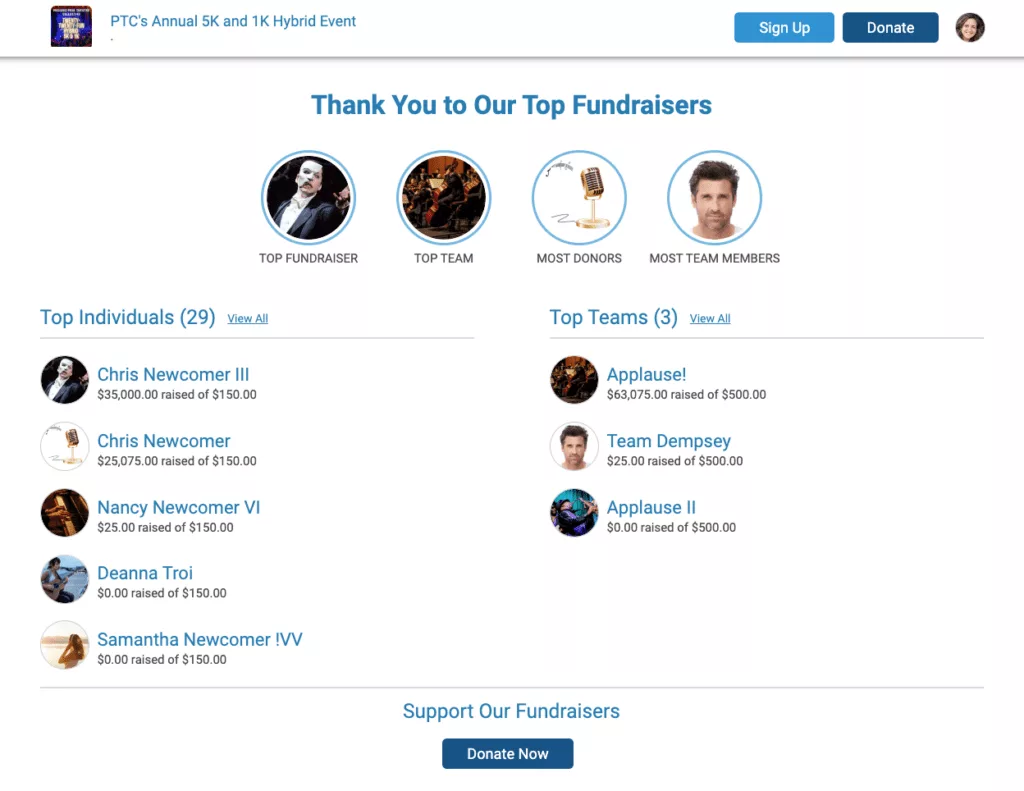
Fundraiser Team Milestones and Badges

Want more data? You can dive into the full RaceTrends Report here.
